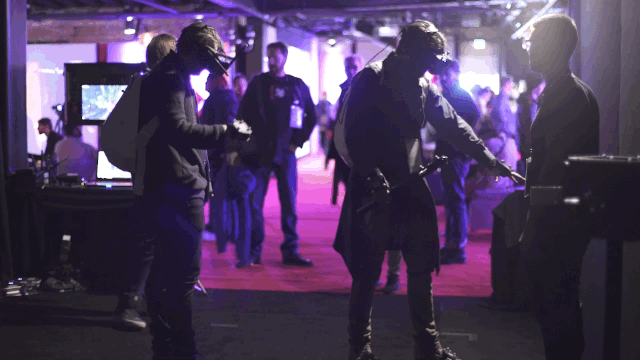New technology is bringing exciting changes to the hospitality industry. Advances like the internet, social media, and smartphones all impact how people plan, travel, and vacation.
That said, not every bit of technology will be well embraced. For example, people thought Google Glass would be a huge deal and the next wearable tech step. While the idea is still in development, it didn’t make as big a splash as everybody thought. Virtual reality tech (VR) is “the next big thing,” and unlike previous tech ideas that didn’t really catch on, VR has a lot of support.
Multiple companies are creating VR headsets, 360-degree and VR cameras are becoming more affordable, and innovative people are finding uses for the tech everywhere, from entertainment to engineering. Getting ahead of the curve and being prepared for the rise of VR can help your business thrive.
Here are a few ways VR is currently being used and other ways it can be implemented in the hospitality industry.
Using VR as a Value-Add
Right now, VR isn’t something people expect from businesses. In fact, it’s a rare feature that people are willing to actively search for. Not many places have VR headsets and experiences, but many people are talking about them, so people are curious.
Finding creative ways to incorporate VR into your overall experience can increase your appeal and attract new demographics. As long as it’s reasonable, incorporating VR headsets into your business is a great way to stand out from the competition. For example, Marriott has started offering “VRooms” in select hotels, where guests can try out a Samsung VR headset and watch full 360-degree videos. It’s part of their new approach to appealing to and attracting millennials to their hotels.
VR can also be used for recreation on an individual and group basis. VR arcades and theme parks are starting to crop up, and the technology is being used for exciting results. These attractions fully immerse visitors in reality and give them real challenges to solve while moving physically in the real world and having their senses virtually stimulated.
Ideas like those at The Void are a great place to start if you want to attract millennials.
VR For Marketing and Sales
Virtual reality tech doesn’t consist of just VR headsets. 360-degree cameras and VR camcorders give you the option to provide potential visitors an even better taste of what you’re offering. Along with exciting photos of your business, providing a VR tour or high-quality 360-degree photos gives your customers a better idea of what they are getting and helps them trust you more.
You could use this technology to show off your hotel rooms, impress with stunning shots of the local sites, or take visitors on a tour of your restaurant or store. Taking these types of photos and videos isn’t difficult either. 360-degree cameras like the Ricoh Theta S work just like a cellphone camera. You hold it up, click the button, and check your work.
Then, you can edit it with special software or upload it to your site as it is. Plus, these cameras work like the ultimate selfie machines. Giving customers the chance to play with the camera and snap photos, then publish those photos on social media, can give you extra exposure.
Facebook made Oculus one of its many high-profile acquisitions in 2014, and it’s clearly going to be a big part of its future since every acquisition it’s made has impacted how businesses connect with followers.
Traveling with VR
Currently, using VR headsets while traveling isn’t very effective. Whenever the car, bus, plane, or train moves, the headset thinks the wearer is moving their head, moving the display. That being said, there is definitely a future for it in the travel industry. As the technology improves and headsets can differentiate between the vehicle moving and the person, VR could be used in two applications: entertainment and enhancing the experience.
The obvious use is having a personal entertainment source strapped to your head for people who dislike traveling. People can watch videos, browse the internet, or play some games without concern of bothering people or having people watch over their shoulders. What’s exciting is enhancing the travel experience. When people travel, their experience is limited to where they are sitting.
With a few strategically placed cameras, though, that can change completely – Someone sitting in a middle seat on an airplane could strap on a headset and suddenly see what it looks like from the nose of the plane, from a different side, or even from the bottom of the plane. A visitor on a cruise ship in a windowless room could look over the ocean from the head of the ship.
How Could Your Business Profit?
Virtual reality is growing in popularity in every market, so you can’t afford to ignore it, especially if you want to attract millennials and younger generations in the coming years. Being ahead of the curve will increase your profits, and doing something new will give you extra exposure and bring in new customers.
Author Bio: Ben Allen is passionate about tech, primarily virtual and augmented reality.







